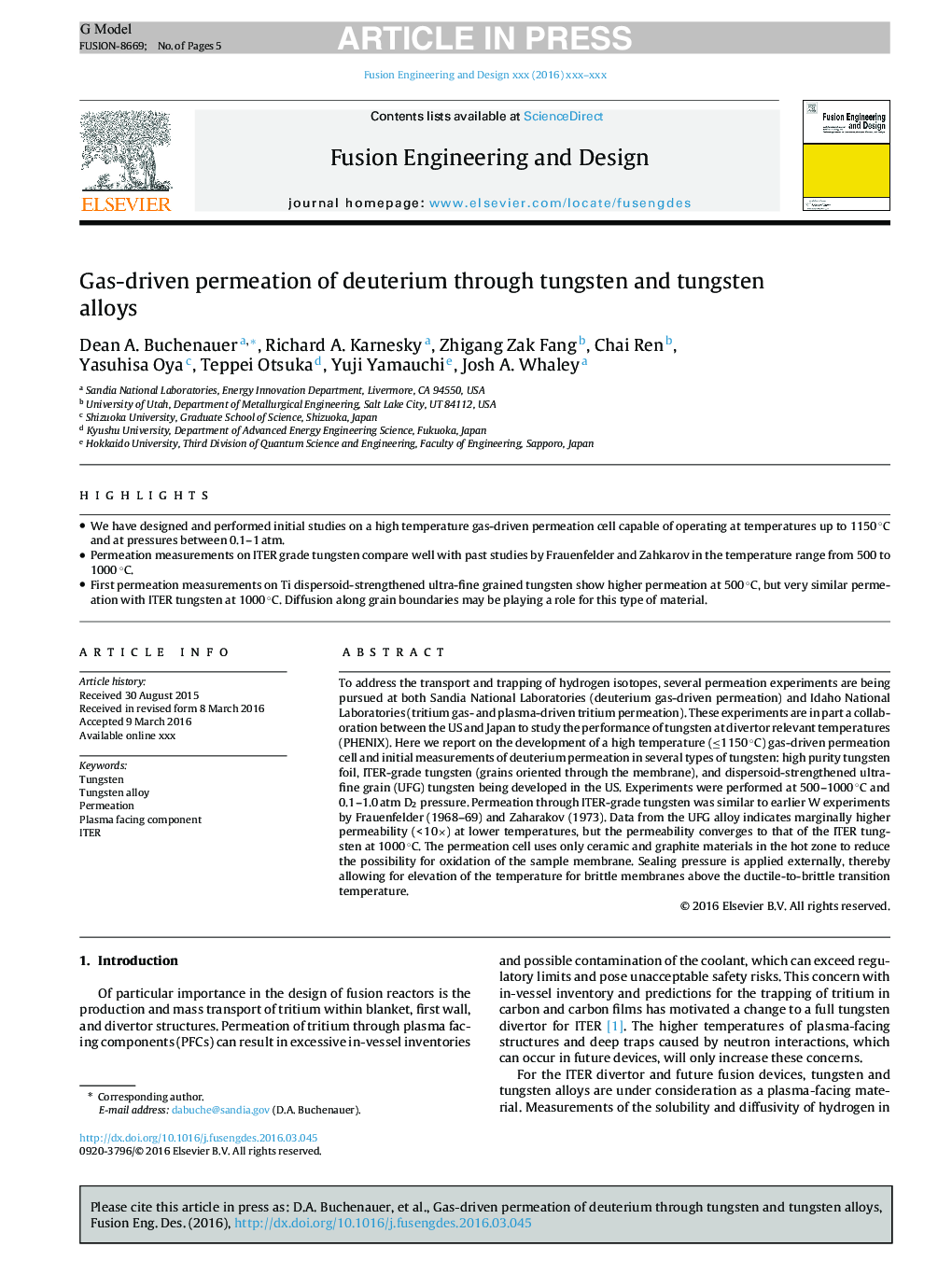| Article ID | Journal | Published Year | Pages | File Type |
|---|---|---|---|---|
| 4921415 | Fusion Engineering and Design | 2016 | 5 Pages |
Abstract
To address the transport and trapping of hydrogen isotopes, several permeation experiments are being pursued at both Sandia National Laboratories (deuterium gas-driven permeation) and Idaho National Laboratories (tritium gas- and plasma-driven tritium permeation). These experiments are in part a collaboration between the US and Japan to study the performance of tungsten at divertor relevant temperatures (PHENIX). Here we report on the development of a high temperature (â¤1150 °C) gas-driven permeation cell and initial measurements of deuterium permeation in several types of tungsten: high purity tungsten foil, ITER-grade tungsten (grains oriented through the membrane), and dispersoid-strengthened ultra-fine grain (UFG) tungsten being developed in the US. Experiments were performed at 500-1000 °C and 0.1-1.0 atm D2 pressure. Permeation through ITER-grade tungsten was similar to earlier W experiments by Frauenfelder (1968-69) and Zaharakov (1973). Data from the UFG alloy indicates marginally higher permeability (< 10Ã) at lower temperatures, but the permeability converges to that of the ITER tungsten at 1000 °C. The permeation cell uses only ceramic and graphite materials in the hot zone to reduce the possibility for oxidation of the sample membrane. Sealing pressure is applied externally, thereby allowing for elevation of the temperature for brittle membranes above the ductile-to-brittle transition temperature.
Related Topics
Physical Sciences and Engineering
Energy
Energy Engineering and Power Technology
Authors
Dean A. Buchenauer, Richard A. Karnesky, Zhigang Zak Fang, Chai Ren, Yasuhisa Oya, Teppei Otsuka, Yuji Yamauchi, Josh A. Whaley,
